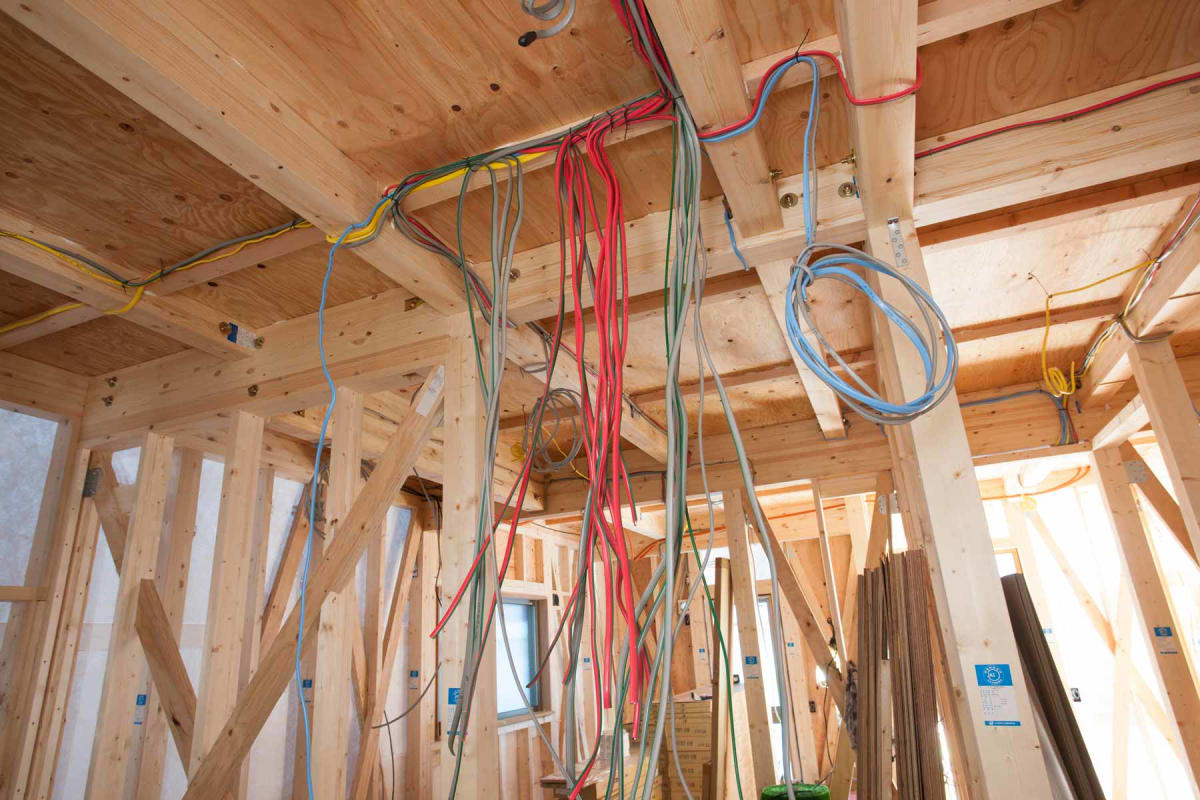When building or renovating, homeowners often look for ways to keep costs down. One of the most tempting areas to trim the budget is electrical work—especially when faced with the often surprising wiring cost for a house. But what seems like a smart saving can quickly become a costly mistake. Cheap wiring may save you upfront, but over time, it can lead to major expenses, safety hazards, and insurance issues.
According to Kyle Hambley, owner of Dynamic Group,
“In residential projects, we frequently see wiring that’s been cut to cost—cheaper brands, poor installation, or wires not rated for the home’s actual load. People don’t realise that it’s not just a short-term issue. It can damage appliances, pose serious safety risks, and cost thousands to fix down the line.”
Here’s a deep dive into why cutting corners on your home’s wiring can end up costing you much more in the long run.
1. Fire Hazards from Substandard Materials
One of the biggest risks of cheap wiring is fire. Budget wiring typically uses low-quality copper or aluminum blends and poor insulation, which degrade faster, especially in warm roof cavities or under high loads. Over time, these materials can crack or overheat, creating short circuits and sparking potential fire hazards.
In fact, faulty wiring is one of the leading causes of residential fires in Australia.
“Cheap insulation gets brittle fast,” says Hambley. “It might pass an inspection when first installed, but five years later it could be a fire waiting to happen.”
2. Increased Energy Bills Due to Inefficient Conductivity
Low-quality wiring doesn’t just carry electricity—it resists it. That resistance translates to energy loss, especially across longer cable runs common in larger homes or multi-storey builds. You might not notice it right away, but over time it leads to:
- Higher electricity bills
- Reduced appliance performance
- Strain on power-hungry devices like air conditioners and cooktops
This kind of inefficiency can quietly drain your wallet year after year.
3. Constant Repairs and Troubleshooting
Cheap wiring tends to deteriorate faster, resulting in more maintenance calls. If your lights flicker, outlets stop working, or circuit breakers constantly trip, chances are the wiring is the culprit.
This becomes especially frustrating when problems are behind walls or ceilings. Fixes often require:
- Cutting into plaster or brick
- Re-routing cables
- Replacing power boards or switches
4. Voided Warranties on Appliances and Fixtures
Major appliances like ovens, refrigerators, air conditioning units, and even solar inverters often come with warranty clauses that specify installation requirements. If damage occurs due to unstable voltage or overheating caused by cheap wiring, the manufacturer may refuse to honour the warranty.
This can be a shock when you’re trying to claim a costly item and discover your installer cut corners years earlier.
5. Compliance Issues and Insurance Risk
Australia has strict electrical codes for good reason. Cheap, non-compliant wiring can fail inspections and lead to problems when:
- Selling your house
- Applying for home insurance
- Filing claims after an electrical incident
Home insurers have become more diligent in recent years. If they discover that damage or fire was linked to non-compliant wiring, they may reduce payouts—or deny claims entirely.
6. Poor Future-Proofing and Scalability
A common issue with cheap wiring is that it’s just enough to meet current needs—but nothing more. That’s fine for the present, but if you ever want to:
- Add a second kitchen or outdoor entertaining space
- Install a pool pump, spa, or electric vehicle charger
- Upgrade to a smart home system
…you may find the original wiring can’t handle it. This often forces homeowners into expensive upgrades or complete rewiring.
7. Decreased Property Value
Savvy buyers and building inspectors now know how to spot low-quality electrical work. It can be as simple as noticing inconsistent outlets, poor switch installation, or buzzing dimmer lights. If buyers suspect the wiring needs work, they’ll either:
- Lower their offer
- Demand pre-sale repairs
- Walk away entirely
That budget job you approved years ago may now cost you thousands in lost property value.
8. Unreliable Safety Features
Many cheap wiring jobs also involve cost-cutting on safety devices like:
- Residual current devices (RCDs)
- Proper circuit segmentation
- Quality switchboards
While these components may meet minimum standards, they’re often not installed optimally. And that can affect your home’s real-world safety, particularly if you have young children or elderly residents at home.
“The bare minimum isn’t good enough when it comes to electricity,” Hambley points out. “It’s either safe, or it isn’t.”
How to Avoid the Pitfalls of Cheap Wiring
If you’re building, renovating, or just upgrading part of your home, keep these tips in mind:
- Ask for certified materials: Ensure all wiring and components meet AS/NZS 3000 standards.
- Get a detailed quote: The cheapest quote is often cheap for a reason—check what materials they plan to use.
- Request brand names: Look for reliable, known brands for cabling and breakers.
- Plan for the future: Spend a little more on capacity now to avoid full rewires later.
- Use licensed electricians: Always choose qualified professionals over cheap alternatives.
Final Thoughts
When it comes to your home’s electrical system, what you can’t see can hurt you. Skimping on wiring might save you a few hundred dollars upfront, but the long-term consequences—from fire hazards to insurance complications—can cost you tens of thousands.
So when budgeting for your project, remember: when it comes to wiring costs for a house, cheap today often means expensive tomorrow.









/socialsamosa/media/media_files/2zHb3sGz3BcGQQrVtOoh.png)